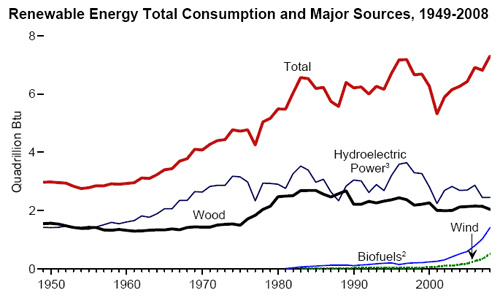 This article is part of the Teach IELTS series at IELTS Academic, an online provider of skills training for IELTS and English as a foreign language.
This article is part of the Teach IELTS series at IELTS Academic, an online provider of skills training for IELTS and English as a foreign language.
Common problems in the IELTS Speaking module include speaking at length, speaking on unfamiliar topics, and managing the conversation.
Nervousness can also cause problems in IELTS Speaking, so IELTS teachers occasionally need the sensitivity of a counsellor as well as the skills of a language teacher!
So, what exactly does IELTS Speaking involve? As you probably already aware, it’s a short (11-14 min) face-to-face interview that takes place within seven days of the paper test. The IELTS Speaking module consists of three parts:
- Part 1: Interview (4-5 mins)
- Part 2: Individual Long-turn (3-4 mins)
- Part 3: Discussion (4-5 mins)
Assessment is based on four equally-weighted criteria:
- Fluency and Coherence: How well the candidate expands answers and connects ideas
- Lexical Resource: The candidate’s range of vocabulary and awareness of collocation
- Grammatical Range and Accuracy: The candidate’s use of appropriate grammatical forms
- Pronunciation: The candidate’s handling of a range of pronunciation features
Below are ten tips that will help you teach IELTS Speaking, better manage your classroom, and get your students speaking in ways that are aligned with the official assessment criteria.
Looking for a basic guide to IELTS Speaking? Read this first: IELTS Speaking: Introduction
Completely new to teaching IELTS? Read this first: How to Teach IELTS: The Basics
1. Stick to pair practice
Since the IELTS Speaking module takes the form of a one-on-one interview, it’s best to stick to this pattern in practice. Avoid whole-class interactions as much as possible and maximise time for pair practice instead. It’s a common myth in language teaching that learner pairs simply replicate each others’ mistakes. Research shows that they actually develop more advanced negotiation and explanation strategies with another learner than they would with a native speaker.
2. Force students to listen for the question
The problem with pair practice is that students are rarely able to resist reading the question even as their partner is asking it! You must activate their listening skills in Parts 1 and 3, or they will fail to cope when they can’t catch the questions in the real test. Force them out of the reading habit by making the interviewee close the textbook during Parts 1 and 3, or prepare different question cards for each partner. A handout of emergency language for checking the question also helps.
3. Model for different band scores
Often the reason students fail to improve is simply that the models they are offered by trainers are so far beyond their ability that they have no idea how to apply them when speaking. Metalinguistic advice based on the scoring criteria, meanwhile, is often difficult for lower-level students to comprehend. A more effective classroom technique may be to model different answers for Bands 4, 5, 6 and 7, making only minimal changes to each answer so students have a clear sense of which changes produced a higher score.
4. Useful language remains useless until you make it useful
Most IELTS textbooks will suggest useful language for answering a set of practice questions, but few provide any real incentive to use it. Bewilderingly, many textbook authors place useful language after the questions, when students have already made up their minds about what they are going to say! Try making students cover the questions with one hand and guess at the questions based on the model language provided. This forces them to process model language more deeply, making it actually useful!
5. Ban certain words and phrases
Students repeatedly ask how they can improve their IELTS Speaking scores in the same way they constantly cling to their favourite words and phrases: I think; I agree; For example; So; Because; fun; interesting. If you really want your students to venture out of their comfort zone in speaking, you might consider imposing a penalty on the use of a certain word or phrase during practice. Possible penalties include coming up with five synonyms when their turn is over.
6. Involve the listener
One classroom problem when teaching IELTS Speaking occurs when students don’t listen to their partner’s answers because they’re too busy thinking up their own. There are several techniques you can use to keep students involved while their partner is speaking, especially during Part 2: the individual long-turn. One is to require everyone to ask a follow-up question. Another is to get students to tick off the different prompts in Part 2 as they are answered. A more challenging task is to withhold the question from one of the pair, who then has to guess at the contents of the question based on their partner’s answer.
7. Teach a range of strategies to expand answers in Part 3
There are many ways of answering the question in IELTS Speaking Part 3. If your students never deviate from the ‘I think X because Y’ linear approach, consider practice activities that force them to expand in other ways. One technique is to have them deal cards containing prompts such as Personal Example, Example from Knowledge, Three Reasons, Attribution, Concession, Recommendation, Prediction, Comparison (Country), or Comparison (Past/Present). Answers will sometimes become incoherent or even surreal but that can add to the fun of the exercise.
8. Make a note of common errors in speaking
IELTS Speaking practice activities are a great opportunity to gather information about students’ most frequent errors which can then be fed back into future lessons. In my experience, students appreciate detailed correction in one-to-one teaching situations, but in group situations it’s better not to highlight errors made by individual students. It’s also better to highlight errors after rather during an activity. Your notes could form the basis of a grammar workshop later on, one that is more relevant to your students’ real needs than the exercises in the textbook.
9. Give your students feedback tools
Pair practice becomes much more rewarding when students have the right tools to give feedback. IELTS Academic has created a simplified feedback sheet based on the IELTS Speaking scoring criteria. The sheet breaks down each of the four scoring criteria into three basic skills that your students need to demonstrate, saving you the trouble of explaining the more complex and jargon-filled band descriptors. Download it from here.
10. Teach to the test
It may surprise you to know that many IELTS textbooks make no direct reference to the IELTS Speaking assessment criteria, even though it is publically available. Textbooks are therefore of limited use, especially when you have a single student who would benefit more from your feedback on their spoken answers with direct reference to the scoring criteria. To teach IELTS Speaking well, listen carefully to what your students say and match your feedback to the official assessment criteria.
Stuck for IELTS Speaking practice questions for your students? See our full list of IELTS Speaking practice tests.
 This article is part of the Teach IELTS series at IELTS Academic, an online provider of skills training for IELTS and English as a foreign language.
This article is part of the Teach IELTS series at IELTS Academic, an online provider of skills training for IELTS and English as a foreign language.


 This IELTS Writing task simply asks you to give your opinion, which appears to be a very open question. As you have just 40 minutes to write your opinion essay, it is best to state a clear opinion in the first paragraph and stick to it, rather than try to deliver a more complex or nuanced answer. Use each body paragraph to add supporting points and restate your opinion in the final paragraph to provide a satisfying conclusion.
This IELTS Writing task simply asks you to give your opinion, which appears to be a very open question. As you have just 40 minutes to write your opinion essay, it is best to state a clear opinion in the first paragraph and stick to it, rather than try to deliver a more complex or nuanced answer. Use each body paragraph to add supporting points and restate your opinion in the final paragraph to provide a satisfying conclusion.







